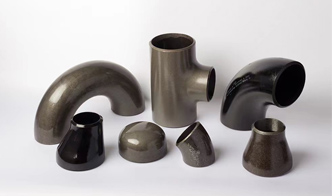Current location:
mandrel bent exhaust elbows
Date:2025-08-16 06:37:33 Read(143)

Bending 201 Stainless Steel Tubing Techniques and Considerations When it comes to shaping and forming stainless steel tubing, specifically 201 stainless steel, bending is a common process utilized in various industries, including automotive, aerospace, and construction. 201 stainless steel is known for its good strength, ductility, and resistance to corrosion, making it an ideal choice for applications that require reliability under stress and exposure to the elements. However, bending this material requires careful consideration of several factors to ensure precision and integrity of the final product. Understanding 201 Stainless Steel 201 stainless steel is part of the 200 series of stainless steels, which are characterized by their lower nickel content and higher manganese levels compared to their 300 series counterparts. This composition grants 201 stainless steel a unique combination of affordability and performance; however, it’s crucial to note that its corrosion resistance is relatively lower than that of austenitic grades, particularly in high-chloride environments. Nevertheless, for applications where moderate corrosion resistance is adequate, 201 stainless steel offers a cost-effective option. Bending Techniques Bending stainless steel tubing can be accomplished through several methods, including rotary draw bending, mandrel bending, and induction bending. Each technique has its advantages and is suited for different types of projects bending 1 stainless steel tubing 1. Rotary Draw Bending This technique involves a bending die and a pressure die to form the tube around a mandrel. It's commonly used for producing tight bends and maintaining the tube's integrity, reducing the risk of wrinkling and cross-section distortion. 2. Mandrel Bending This process is similar to rotary draw bending but uses a mandrel inside the tubing to support it during the bending. This technique is ideal for achieving precise bends with a smooth radius, especially useful for applications where flow dynamics are critical, such as piping systems. 3. Induction Bending In this method, an induction coil heats a localized section of the tubing, allowing it to be bent into shape without altering the structural integrity. This is particularly useful for larger diameters and complex shapes, as it minimizes the risk of kinks and other deformities. Considerations for Bending When bending 201 stainless steel tubing, it’s important to consider the wall thickness, bend radius, and the specific requirements of the project. Thicker walls may require adjustments in bending techniques to prevent cracking or deformation. Additionally, selecting the appropriate bend radius is crucial, as tighter bends increase the likelihood of material fatigue or failure. In summary, bending 201 stainless steel tubing can be efficiently achieved through various methods, with careful attention to the material properties and project specifications. By understanding the techniques and considerations involved, manufacturers can produce high-quality bends that meet the necessary performance standards, ensuring longevity and reliability in their applications.
Share:
Previous: Durable Rubber Lined Slurry Pumps for Efficient Handling of Abrasive Materials in Industrial Applica
Next: Exploring the Dynamics of Coupling Phenomena in Chinese Contexts
Kind tips:The above content and pictures are compiled from the Internet and are for reference only. I hope they will be helpful to you! If there is any infringement, please contact us to delete it!
You may also like
- Equivalent Materials for ASTM A106 Grade B Steel and Their Applications
- Exploring A333 Grade 6 Steel Properties and Applications in Structural Engineering
- Curved Mandrel Design for Exhaust Pipe Performance Enhancement and Durability Optimization
- en1092 1 pn10
- Current Trends in Galvanized Tube Pricing and Market Analysis
- Exploring the Relationship Between psl1 and psl2 in Data Analysis Techniques
- EN1092 1 PN16 flens specificaties en toepassingen voor industriële systemen
- Exploring the Features and Applications of 2% 150 Flange in Industrial Systems and Engineering
- bendable stainless steel tubing